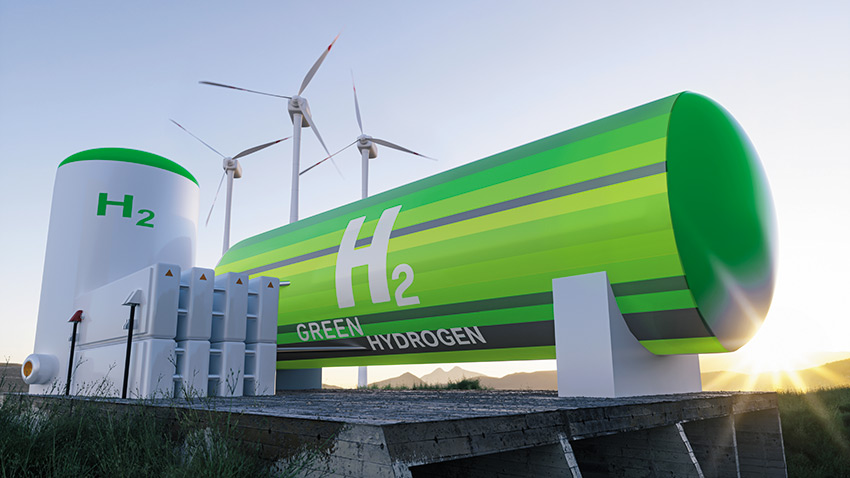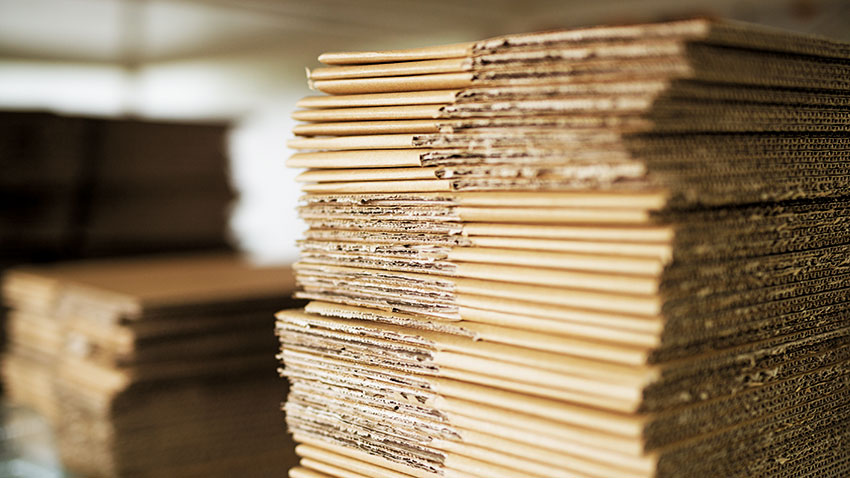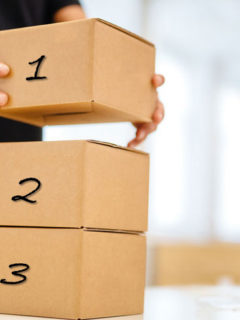Time for the third part in our blog series‘The warehouse of the future’. Together with several top experts, this time we explore the question: “How can we achieve greener logistics?” Want to delve even deeper? Then be sure to check out our other blog articles and become a real expert yourself. You will learn all about the future of logistics centres in the city of tomorrow and the rise of automation and digitalisation in a warehouse.
How will logistics managers be able to meet the new environmental challenges? And what technologies and skills can help them do so? To that end, in this section we explore the unique relationship between Corporate Social Responsibility (CSR) and the warehouse of the future. Discover with us how well you are already on your way…
New sustainable rules for tomorrow’s greener logistics
There is no getting around it: as we all face more frequent extremes such as a prolonged heat wave or high rainfall, the environmental awareness of the average consumer will be further fuelled. National and international regulations will increasingly respond to this. Because logistics processes have a major impact on the environment, they have been a key focus of Corporate Social Responsibility (CSR) in many companies for several years. Greener logistics can make the difference…

The logistics sector is the lifeblood of our economy. This was especially evident during the corona pandemic a few years ago. E-commerce boomed like never before during this period. Because of the strength of our logistics, it is the ideal sector to launch innovations and transformations to future-proof our entire economy. We are now at the beginning of a new form of 'Industrial Revolution' in Europe, where there will be an extra focus on carbon neutral policies. However, this brings with it a lot of technical and environmental challenges: logistics specialists have to strike a balance between reducing land use, reducing traffic and achieving greener logistics. An interesting puzzle to solve.
Chazli Baalbaki, Development Director at Faubourg PromotionTowards/with more sustainable transport
Nowadays, many new techniques are being developed to create greener logistics. One example is what we call multimodal transport. This involves cleverly combining different means of transport per shipment, such as road, rail and water transport. The use of environmentally friendly modes of transport, such as river, rail and sea transport, will become more important. It is mainly the technology behind this transport that makes for an environmentally conscious approach. For example, the use of green energy sources is expected to increase, such as hydrogen (to power warehouse vehicles) and green natural gas (for trucks).
The world of eco-friendly solutions and alternatives is constantly moving and becoming more complex… The challenge for logistics companies will be to find just the right solution in terms of performance and sustainability. In doing so, they need to constantly monitor any environmental impact.

There are many new technologies on the way that have the potential to tackle numerous environmental problems. Robots, for example, do not need lighting to work. As a result, they can contribute to lower energy consumption in a warehouse. When we add up these kinds of 'small' adjustments, we can already see how technology is contributing to ecological progress. Moreover, in recent years, these technologies have become increasingly sustainable and reliable. Of course, there is an environmental cost in building these technical solutions. But their lifespan increases significantly over time. That makes the environmental benefit gained far greater than its construction cost.
Mathieu Guiraud, Project manager and robotics expert at WIIO
Packaging: the beating heart of your greener logistics
Ready for 100% eco-friendly logistics? Then you can’t ignore packaging. They are just as important as, for example, the energy consumption of your warehouses and the transport of your goods. What challenges will logistics companies face in this regard between now and 2050? In future, practical solutions will have to reconcile the convenience of packaging with its sustainable development – with a view to both economics and ecology.
To achieve this, we need to rethink the basic uses of packaging. Does a consumer actually need packaging? Consumers naturally ask themselves this question too… Hence, the packaging sector must anticipate this and dare to critically scrutinise this question.
Hence the need for designers and developers to think about the added value of packaging in protecting your product. The idea is to prevent packaging from being used for something other than what it is intended for and to ensure that the right packaging is used. Compact packaging, using recyclable materials, is preferred.

Currently, companies still often put too many plastic components in their packaging, which in many cases makes the processing process unnecessarily complex. Such plastic packaging is usually so strong that if it accidentally ends up in nature, it will remain there for a long time. Both consumers and manufacturers need to rethink this problematic situation. Plastic per se is not so much the problem as the lack of proper sorting and recycling of the waste fractions. Therefore, packaging should be made simpler, for example by opting for packaging made 100% from just 1 material: a mono-material. This can be cardboard but also plastic, glass, metal, etc.
Fabrice Peltier, Designer and eco-design consultantReady for the packaging of the future?
What will the packaging of the future look like? The solutions currently circulating on the market already provide an interesting insight. Packaging made of renewable materials, such as cellulose or sugar cane, is likely to be developed further.
The real question to ask is whether it is still OK to use packaging only once? New legislation and perceptions will make it impossible in the very near future to use packaging that cannot be recycled or reused. These guidelines are already included in the Packaging and Packaging Waste Regulation, a European packaging law that sets future packaging rules for the e-commerce sector. Moreover, this also means that logistics players will have to think differently about their goods distribution and logistics. Companies will have to think about alternative methods of packaging and distributing their goods.

More than ever, the packaging of the future needs to be the right packaging, properly tailored to your goods. So choose the right material, the right dimensions, the right weight, etc. Today, we live in an age of excess: too many options, too much packaging, too much consumption. Therefore, we should learn to reuse packaging more often or recycle it more easily. In this way, we can reduce overall resource consumption in Europe. A good thing for everyone!
Fabrice Peltier, Designer and eco-design consultantThe 5 basics of eco-friendly packaging
We cannot yet say for sure what packaging will look like in 2050, but it is perfectly possible to start taking an eco-friendly packaging approach now. This can be done using the 5 basic principles below.
- [1] Reduce the weight and volume of packaging for sturdy and compact protection. In RAJA’s range, for example, you can choose from no fewer than 1,250 sizes of cardboard boxes. So there is always a box that fits your product perfectly, with an absolute minimum of empty packaging space.
- [2] Reuse packaging whenever possible. RAJA, for example, is hard at work bringing new designs to market. Those new postal boxes should make it possible to reduce raw material consumption.
- [3] Replace environmentally unfriendly and non-recyclable packaging with ecological alternatives. You can easily do this by choosing either recycled plastic.
- [4] Renew by choosing natural raw materials, including wood and cardboard. These raw materials can be produced endlessly thanks to smart and responsible forest management.
- [5] Recycle as much packaging as possible for a circular economy. Smart sorting plays a key role for success here.















